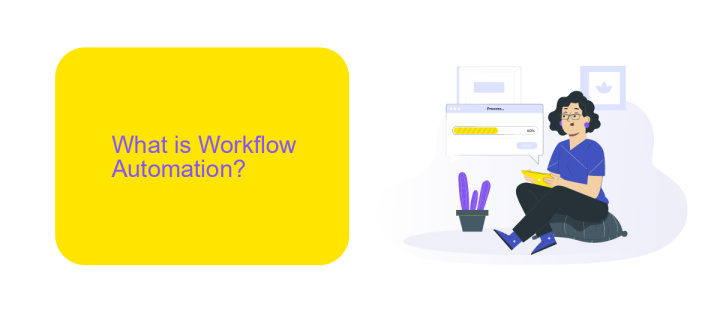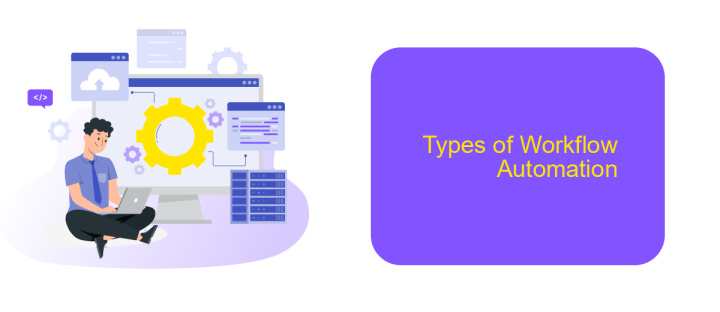Definition Workflow Automation
Workflow automation is the technology-driven process of streamlining business tasks by automating repetitive activities. It leverages software to execute defined sequences of operations, reducing human intervention and minimizing errors. By implementing workflow automation, organizations can enhance efficiency, improve accuracy, and save valuable time, allowing employees to focus on more strategic tasks that drive innovation and growth.
Introduction
Workflow automation is the process of automating routine tasks and processes within an organization to improve efficiency and reduce manual effort. By utilizing various tools and technologies, businesses can streamline their operations, minimize errors, and focus on more strategic activities.
- Increased productivity
- Reduced operational costs
- Improved accuracy and consistency
- Enhanced collaboration and communication
One of the key components of workflow automation is the integration of various applications and services. Tools like ApiX-Drive facilitate seamless integration between different platforms, allowing data to flow effortlessly and processes to be executed without manual intervention. By leveraging such services, organizations can create a cohesive and efficient workflow that drives better business outcomes.
What is Workflow Automation?

Workflow automation refers to the use of technology to streamline and automate complex business processes and tasks, reducing the need for manual intervention. This involves the integration of various applications and systems to enable seamless data flow and task execution. By automating repetitive tasks, organizations can improve efficiency, reduce errors, and free up employees to focus on more strategic activities.
One of the key components of workflow automation is the use of integration services like ApiX-Drive. These services facilitate the connection between different software applications, allowing for the automatic transfer of data and triggering of actions across platforms. For example, ApiX-Drive can link your CRM system with your email marketing tool, ensuring that contact information is always up-to-date and enabling automated email campaigns. By leveraging such integration services, businesses can achieve a higher level of operational efficiency and responsiveness.
Benefits of Workflow Automation

Implementing workflow automation can significantly enhance operational efficiency and reduce manual errors. By automating repetitive tasks, businesses can allocate resources more strategically and focus on higher-value activities. Workflow automation not only streamlines processes but also ensures consistency and reliability in task execution.
- Increased Efficiency: Automation speeds up processes by eliminating bottlenecks and reducing the time spent on manual tasks.
- Cost Savings: Reducing the need for manual intervention cuts down on labor costs and minimizes the risk of costly errors.
- Enhanced Accuracy: Automated workflows ensure tasks are completed with precision, reducing the likelihood of human error.
- Scalability: As businesses grow, automated workflows can easily scale to accommodate increased workloads without additional strain.
- Improved Integration: Tools like ApiX-Drive facilitate seamless integration between various software applications, further enhancing workflow efficiency.
Overall, workflow automation transforms the way businesses operate, leading to a more productive and agile environment. By leveraging tools like ApiX-Drive, companies can integrate their systems effortlessly, ensuring a cohesive and efficient workflow. This ultimately empowers organizations to achieve their goals more effectively and stay competitive in their respective markets.
Types of Workflow Automation

Workflow automation comes in various forms, each designed to streamline different aspects of business processes. Understanding these types can help organizations choose the right solutions to enhance productivity and efficiency.
One type of workflow automation focuses on task automation, which involves automating repetitive tasks that do not require human intervention. This can include sending emails, generating reports, or updating databases. Another type is process automation, which aims to automate entire business processes from start to finish, such as order processing or employee onboarding.
- Task Automation: Automates individual tasks like email notifications and data entry.
- Process Automation: Automates entire workflows, such as order fulfillment.
- Integration Automation: Connects various software and services to work together seamlessly.
Integration automation is particularly important for businesses using multiple software tools. Services like ApiX-Drive facilitate this by enabling seamless integration between different applications, ensuring data flows smoothly across platforms. By leveraging these types of workflow automation, businesses can significantly reduce manual effort and improve overall operational efficiency.
- Automate the work of an online store or landing
- Empower through integration
- Don't spend money on programmers and integrators
- Save time by automating routine tasks
Implementation of Workflow Automation
Implementing workflow automation begins with a thorough analysis of existing processes to identify repetitive and time-consuming tasks. Once these tasks are identified, the next step is to choose the right automation tools and platforms that align with the organization's needs. It is crucial to ensure that the chosen tools can seamlessly integrate with existing systems and software. For instance, ApiX-Drive is an excellent service that facilitates easy and efficient integration between various applications, enabling smooth data transfer and synchronization.
After selecting the appropriate tools, the next phase involves configuring and customizing the automation workflows. This may include setting up triggers, actions, and conditions that dictate how and when tasks should be executed automatically. During this stage, it is essential to test the workflows thoroughly to ensure they function as intended. Continuous monitoring and optimization are also necessary to adapt to any changes in the processes or business requirements. By following these steps, organizations can successfully implement workflow automation, leading to increased efficiency and productivity.
FAQ
What is workflow automation?
How can workflow automation benefit my business?
Which processes are suitable for automation?
How do I get started with workflow automation?
What tools can I use for workflow automation and integration?
Apix-Drive is a simple and efficient system connector that will help you automate routine tasks and optimize business processes. You can save time and money, direct these resources to more important purposes. Test ApiX-Drive and make sure that this tool will relieve your employees and after 5 minutes of settings your business will start working faster.


